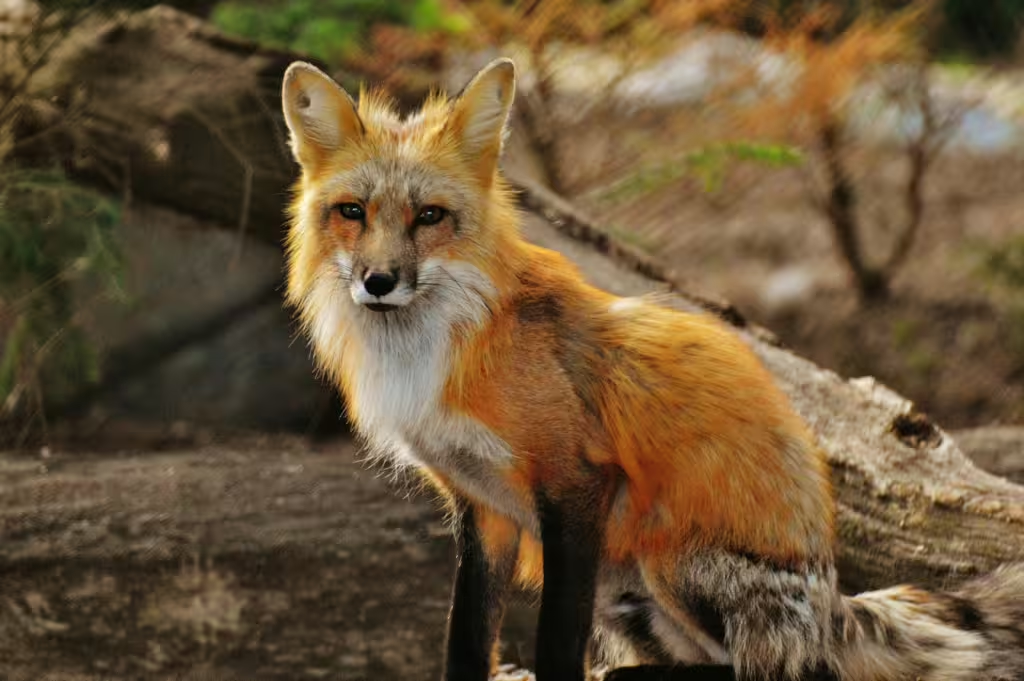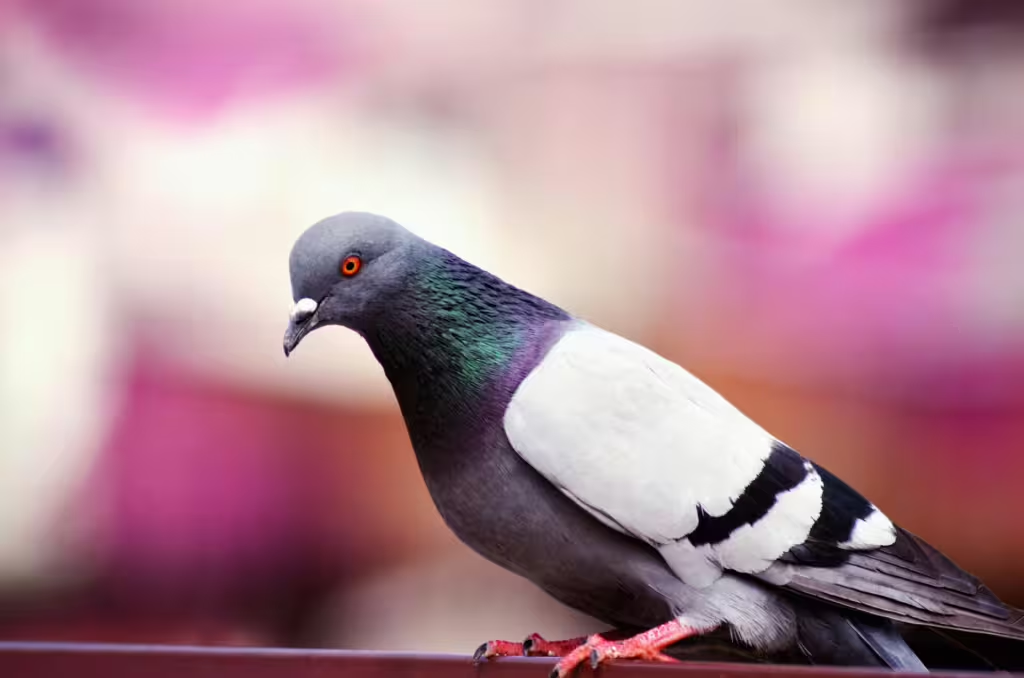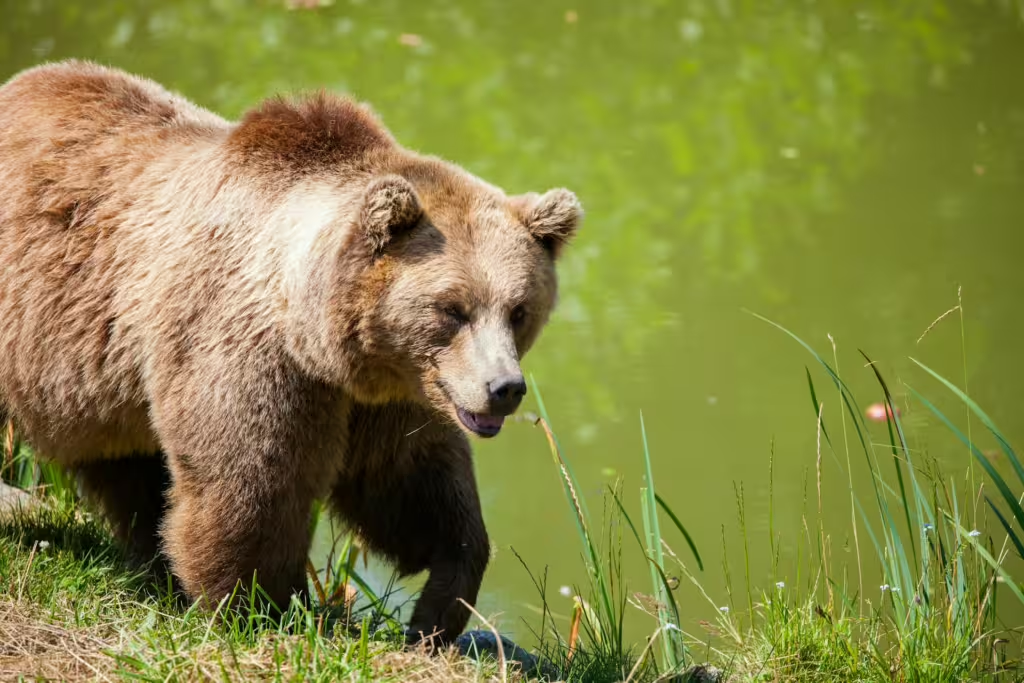From melting glaciers to polluted oceans to ever-shrinking forests, the Earth’s diverse array of ecosystems ha ve come under immense pressure due to human-induced environmental changes. Things like climate change, pollution, habitat fragmentation, and invasive species have always been issues for terrestrial species and despite the best efforts of some very dedicated people, these issues are still transforming landscapes at an unprecedented pace.
Forests, for example, are being cleared for agriculture and urban development, without surcease. Meanwhile, rising global temperatures are shifting climate zones, warming oceans, and disrupting age-old migration patterns for millions of species all over the world. At the same time, air and soil pollution are altering food webs, starving out entire species, and vastly affecting reproductive cycles for many. Nearly all of these are caused by human beings and our continued influence is only making things worse.
It isn’t just our waste that creates these ecological issues either. Our very infrastructure—roads, fences, buildings, wharfs, and cities—continues to carve up once-continuous habitats, isolating wildlife populations in destructive ways. Yes, we need this infrastructure to support our own continued existence, but it seems as though the cost of humanity’s success comes at a price to all of our animal neighbors.
Yet, nature has always proven to be remarkably resilient; even in the face of our own callous ways. Across continents and climates, a number of animals have found ways to adapt to the challenges caused by human beings. These remarkable adaptations highlight not only the evolutionary ingenuity of these creatures but also the critical roles they play in their ecosystems.
Despite the amazing adaptations of some animals, not every species is as lucky. Some are still declining or vanishing altogether, even as others find new ways to persist—even thrive—in their new, altered environments. It should be noted that this uncommon resilience often requires rapid changes in behavior, reproduction, diet, or physiology, but these alterations showcase the ability of life to innovate under pressure.
In this article, we will explore how some terrestrial species are adjusting to modern environmental stressors in remarkable ways. The survival strategies employed by these animals range from behavioral changes to physiological shifts and yet each one offers insights into the dynamic relationship between organisms and their changing habitats. The point of all this is that, by learning from their stories, we can better appreciate the resilience of nature—and perhaps find guidance for our own role in building a more sustainable future.
Red Fox (Vulpes vulpes)
Habitat: Normally these animals live in meadows or forest, yet now they can be found in cities throughout Europe and North America.
Adaptation: Red foxes have experienced shifts in activity patterns and a newly diverse diet.
Ecological Value: These animals are vital in helping to control urban rodent populations.
In the days since human cities began to dominate the natural landscape, red foxes have become a much more frequent sight within urban centers. They have also become more nocturnal over the years to avoid human activity. These clever canines thrive on a varied urban diet, including food scraps, which helps reduce waste and maintain rodent populations in check.

African Elephants (Loxodonta africana)
Habitat: Though they can be found in many different biomes across the continent, African elephants live in Sub-Saharan Africa.
Adaptation: Elephants have evinced increased nocturnal activity in response to poaching and the ever-increasing heat caused by climate change.
Ecological Value: Elephants are ecosystem engineers and seed dispersers.
In an effort to avoid human conflict and extreme heat, elephants are already becoming more active at night than they have ever been. This nocturnal shift allows them to continue their role as ecosystem architects, knocking down trees and rooting in the soil with their tusks in an inadvertent effort to maintain savanna habitats. Elephants also aid in seed dispersal with their dung and expansive range.
American Pika (Ochotona princeps)
Habitat: These diminutive little rodents dwell in alpine and subalpine regions of North America.
Adaptation: In an effort to find more hospitable habitats, Pikas have begun to relocate to higher elevations. They have also evinced some measure of behavioral thermoregulation.
Ecological Value: Like most rodents, pika are key prey species within their ecosystems. Their burrowing behavior also contributes to soil turnover.
Faced with the same warming temperatures that are affecting every other living creature on the planet, pikas are moving to higher, cooler areas to escape the heat. They have also begun to forage early in the morning or late in the evening to avoid any incidental heat stress. Their continued existence and ability to adapt means that they will continue to support predator populations and soil aeration for the near future.
European Hedgehog (Erinaceus europaeus)
Habitat: These days, the charming hedgehog can be found in urban gardens and rural hedgerows throughout Europe.
Adaptation: Hedgehogs have become a bit more clever and have begun to use gardens and compost heaps for nesting. Their hibernation patterns have also shifted.
Ecological Value: Despite their relatively small size and cuteness, hedgehogs are vital to their ecosystem. They control insect populations and their presence contributes to biodiversity.
Hedgehogs have been the popular protagonist for video games and children’s stories for generations and they have been important members of their ecosystem for even longer! These days, a great majority of them have altered their hibernation timing in response to warmer winters. At the same time, some hedgehogs have even begun utilizing human-made structures like compost heaps for nesting. In both cases, the continued existence of the noble hedgehog helps to maintain garden health by consuming pests.
White-footed Mouse (Peromyscus leucopus)
Habitat: This particular mouse can be found in North American forests and suburbs.
Adaptation: White-footed mice have experienced genetic changes which have enhanced their immune function and metabolism.
Ecological Value: Like so many multitudinous mammals, mice are prey for predators. They are also seed dispersers.
Many of us have encountered mice in our daily lives. This makes sense, as these animals can be found in most rural, urban, and suburban areas where humans also dwell. In fact, urban populations of white-footed mice have evolved genetic traits that boost detoxification and pathogen resistance, which helps them cope with pollution and disease. Meanwhile, the still healthy populations of these rodents continue to serve as a food source for owls, snakes, and foxes.
Common Blackbird (Turdus merula)
Habitat: This breed of blackbird can be found in European forests and cities.
Adaptation: Blackbirds have begun to breed earlier, migrate over shorter distances, and changed up their song pitches in an effort to overcome their noisy, urban homes.
Ecological Value: Songbirds of all kinds are excellent pest controllers and seed dispersers.
Many Urban blackbirds have stopped migrating entirely and have also begun to breed earlier due to warmer urban microclimates. Those that dwell near noise-polluted cities have also modified their songs to be heard over the cacophony, thereby maintaining their ecological role in pest control and seed dispersal.

Koala (Phascolarctos cinereus)
Habitat: The adorable and wildly-popular koala lives only in the eucalyptus forests of Australia.
Adaptation: Up until very recently, the reason koalas lived primarily in eucalyptus forests was because their diet consisted only of that particular plant. This diet has since shifted and the formerly arboreal creature has adopted an increased use of ground travel.
Ecological Value: Koalas controls the growth of eucalyptus and their dung and diet support forest structure.
In response to massive events of deforestation and drought, koalas have begun to vary their diet to include more than just base eucalyptus. They are now open to eating different types of eucalyptus as well as spending more time on the ground, which they use to move between their greatly fragmented habitats.
Snowshoe Hare (Lepus americanus)
Habitat: These nimble critters dwell in boreal forests of North America.
Adaptation: Snowshoe hares utilize coat color mismatch and adopting behavioral camouflage to blend in better, even with the rapidly shifting seasons caused by climate change.
Ecological Value: Like their rabbit cousins, snowshoe hares are prey for lynx and other boreal predators like wolves.
We’ve all seen it ourselves, especially if we live in a formerly snowy area; these warmer winters have led to less snow and less ground cover. For snowshoe hares, this means that their white winter coats tend to stand out more in the brown. As a result, some populations are developing delayed color changes or behavioral camouflage to remain hidden, even when snow is in short supply.
American Bullfrog (Lithobates catesbeianus)
Habitat: These recognizable amphibians can be found in wetlands all across North America, though they can be found in other places as well, where they have become invasive.
Adaptation: Bullfrogs are showing an increased tolerance to pollutants and warmer water than many of their marshland neighbors.
Ecological Value: Though relatively small, these frogs are vital predators within their ecosystems, preying upon insects and small vertebrates.
Bullfrogs may seem like they are at the mercy of the seasons but these audacious amphibians are adapting quite adeptly. They have learned ways to survive in polluted and warmer wetland environments without succumbing to those toxins. This impressive new resilience ensures continued control of insect populations, though in non-native areas they still pose a significant ecological threat to endemic species.
Rock Pigeon (Columba livia)
Habitat: The so-called “rats with wings” can be found in urban areas worldwide.
Adaptation: In response to living amongst human infrastructure and pollutants, these birds have built up a tolerance to heavy metals and developed altered gut microbiomes to be able to feed on what is, essentially, not bird food.
Ecological Value: Pigeons might have a bad rep but they are important for urban seed dispersal and are still prey for urban raptors like the Peregrine Falcon.
Rock pigeons, also known as pigeons to most, are quite remarkable despite their ubiquitousness. These amazing animals have developed enhanced gut bacteria that help neutralize toxins from urban pollutants. They thrive in the cities that were once their cliffside nesting grounds and continue to contribute to nutrient cycling in those habitats. They also serve as prey for other animals.

Grizzly Bear (Ursus arctos horribilis)
Habitat: Grizzly bears can be found across Western North America, in forest and mountain regions.
Adaptation: Like Black Bears, grizzlies have shifted their diets to include more vegetation and human foods.
Ecological Value: It should come as no surprise that grizzly bears are apex predators in their ecosystem but they are also valuable seed dispersers because of their taste for berries.
With earlier snowmelts and changing prey availability, grizzlies have had to change up their diets in some major ways. For example, many grizzlies now consume more berries than they used to and some will forage in human garbage when the opportunity presents itself. The digestive processes of these giant predators aid seed dispersal and the meat portion of their diet helps to control prey populations.
Green Anole (Anolis carolinensis)
Habitat: Tiny lizards that can be found throughout the Southeastern United States, these little buggers are often seen in and around suburban houses.
Adaptation: Modern anoles are showing greater heat resistance to the effects of climate change and others are evincing altered perch behavior.
Ecological Value: Like most small predators, these lizards are an essential part of insect control. If you live in the Southeastern U.S. at all…you know how important that is!
Anoles are evolving tolerance to higher temperatures by changing the way they select and use perches, opting for shadier spots than they might have previously. Their ability to regulate insect populations is crucial for healthy garden and forest ecosystems, as well as general human comfort.
True Investigator Says…
As you can see, each of the animals on this list is an example of Mother Nature’s remarkable adaptability. Each species offers a story of hope amid environmental upheaval, serving as real-time examples of evolution in action. The abilities of these critters showcases nature’s ability to respond to adversity. Sadly, adaptation is not a substitute for protection. These animals’ continued presence and their survival depends on our willingness to recognize their value and fight for the environment with all the tools available to us. Additionally, understanding how species are adjusting can offer scientists valuable clues about the broader health of ecosystems. They might even give us further clues about how these animals might continue to evolve under the constant deluge of new environmental strain.
Discover more from TrueInvestigator
Subscribe to get the latest posts sent to your email.


